Question ID: 1000-8418-0-1-4-6
Recipe Description
To make the chocolates you need at least the following materials:Macrolon mold A bowl Spatula Thermometer Spoon(s)And of course you also need the ingredients:Chocolate (200 grams: dark, milk or white. Just cheap chocolate from the supermarket) (Whipping) cream (30% - 40% fat) Flavour for the filling (lemon, orange or coffee for example)
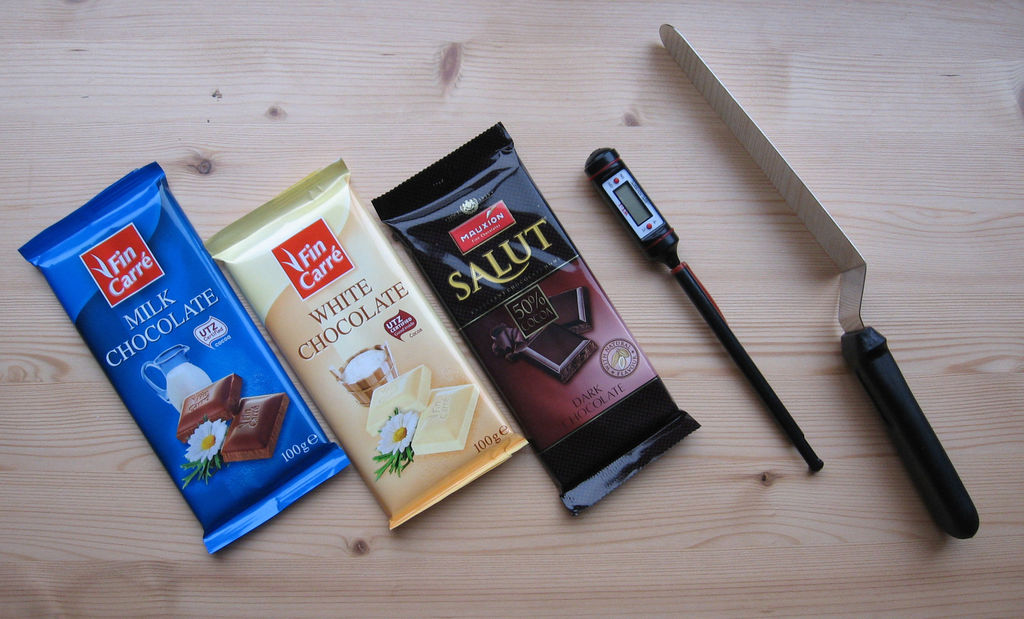
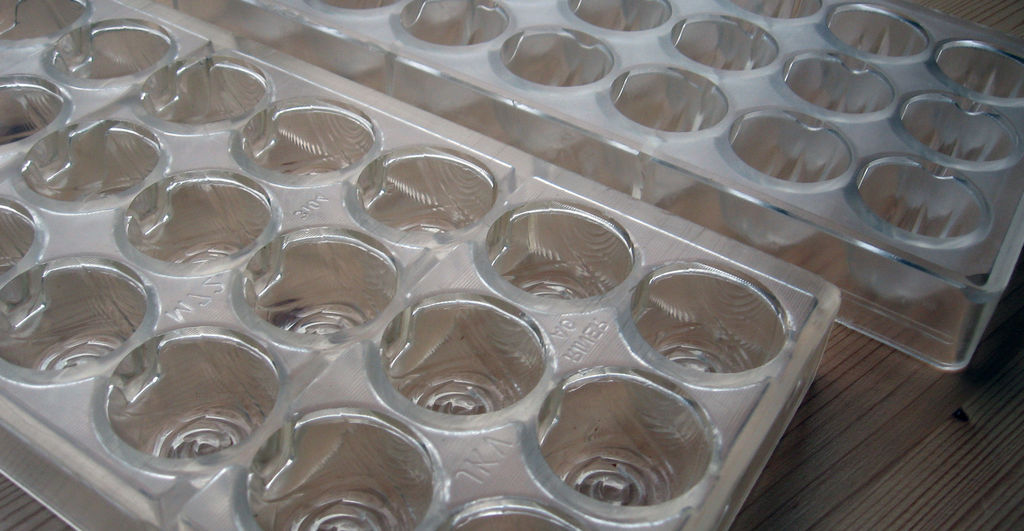


There are two ways you can melt the chocolate. Au bain maireYou could melt the chocolate au bain marie. To do this, boil water in a pan and put a bowl with the chocolate in the hot water. The tricky part is that you really need to be careful not to drip water in the molten chocolate, because it causes the chocolate to (irreversibly) solidify. This method is still very usefull, espesially when you don't have a microwave oven (see the images with dark chocolate).Microwave ovenUsing the microwave is the easiest way. You put the chocolates in the bowl and put that in the microwave for about twenty seconds. After this time you need to scoop/stirr the chocolate, preventing it to become too hot. You need to repeat this until the chocolate is molten completely (images with white chocolate).
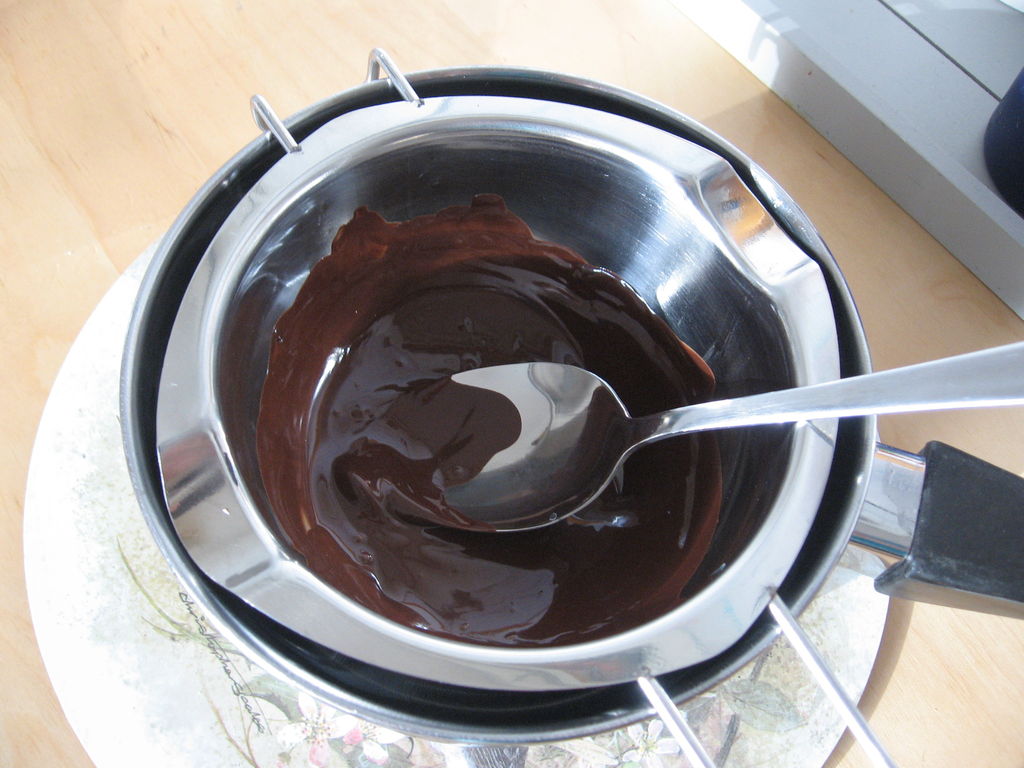
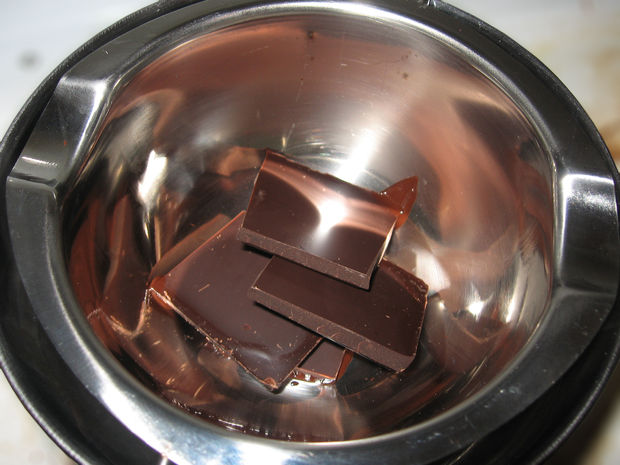
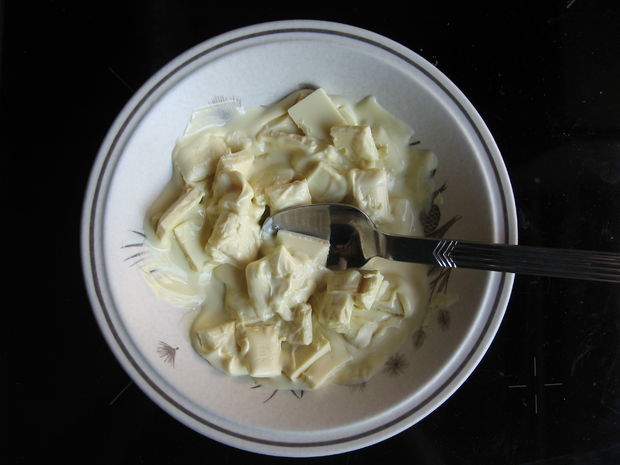
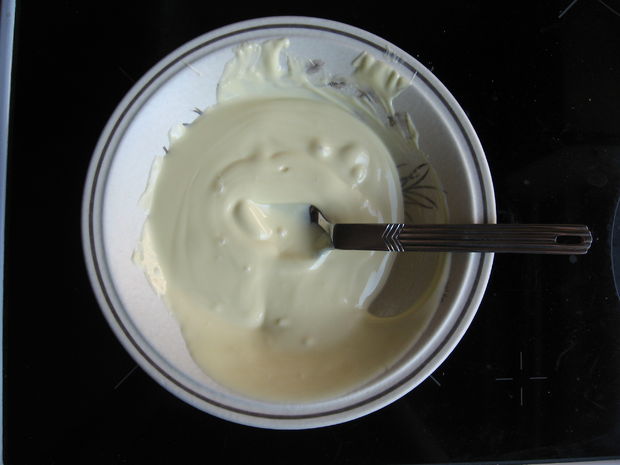




After melting the chocolate you need to temper it. This is simply cooling down until a certain temperature. This is really important because if you mold the chocolate too hot, it won't come out of the mold. Every now and then you need to scoop the chocolate while measuring the temperature, until you reach the critical temperature. If you don't want to wait you could also add unmolten chocolate and melt it in the other chocolate, this way the temperature will drop faster. The ideal temperature is somewhere between 30 and 34 degrees celcius. At this temperature the chocolate has the ideal substance to be molded. If you make molded chocolates for the first time, it is advisable to let it cool to 30 degrees rather than 34 because it will give the chocolates a thicker shell. The advantage is that it will crimp better when cooled, which makes the chocolates more likely to be demolded without problems.
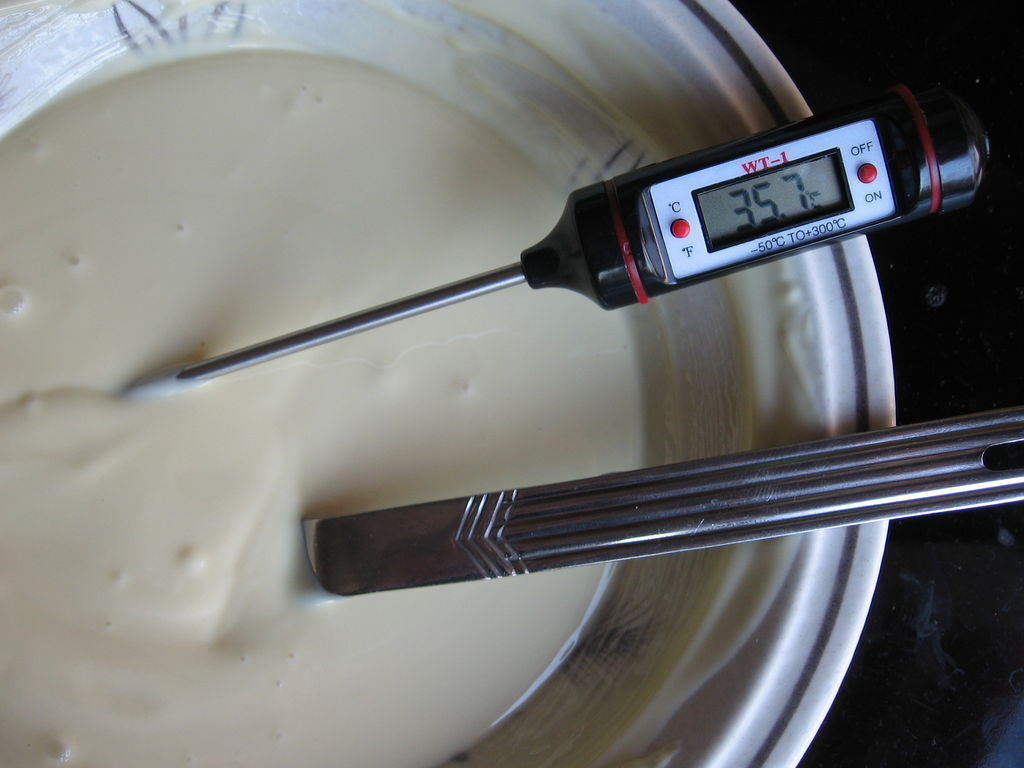

To mold the chocolate you need to pour chocolate in the mold until the mold is completely filled. Next you need to shake the mold to remove all the air bubbles. The easiest and most effective way to do this, is to place the mold with one half on the table and the other half over the edge of the table in the air. In this position you can move the end that is in the air up and down in a fast shaking (rattling) motion until the bubbles are gone.The picture above (bottom left) shows the air bubbles you get when you don't shake the molds enough.Now you can turn over the mold, holding it over the bowl of molten chocolate. Let the chocolate drip out of the mold cavities and scrape the surface clean with a palette knife.Ideally you want a thin layer of chocolate to cover the cavities of the chocolate mold. If the layer is too thick, it will become unpleasant to eat the chocolates because you need to have a strong bite. On the other hand, if the layer is too thin, the bottom will break off when you are demolding the chocolates. The ideal thickness makes the chocolates crispy to eat.Now put the molds in the refrigerator to harden the chocolate for about 15 minutes. Don't put them in the freezer! This is really bad for the chocolate. If chocolate cools too fast it will turn grey (bottom right picture) and the chocolates won't look very tasty.
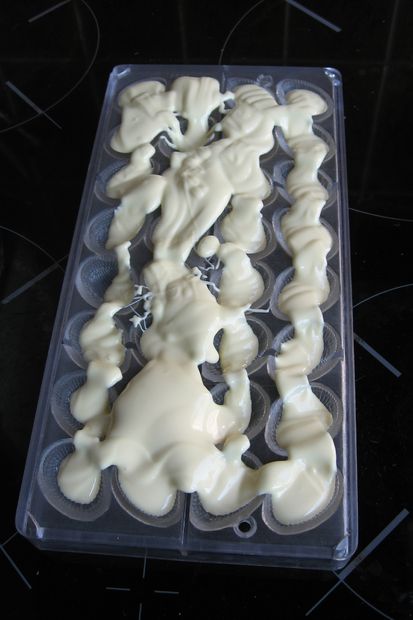
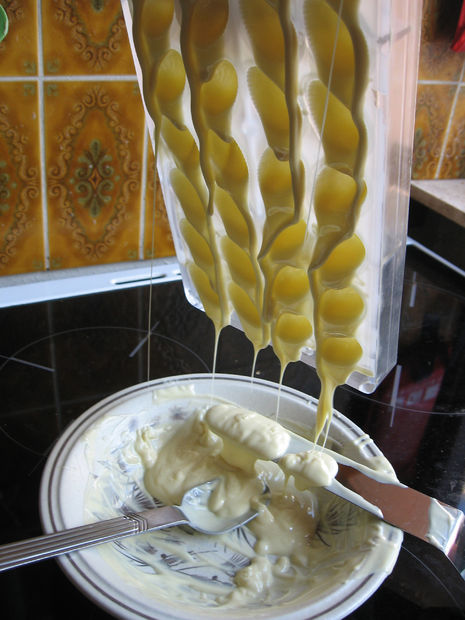
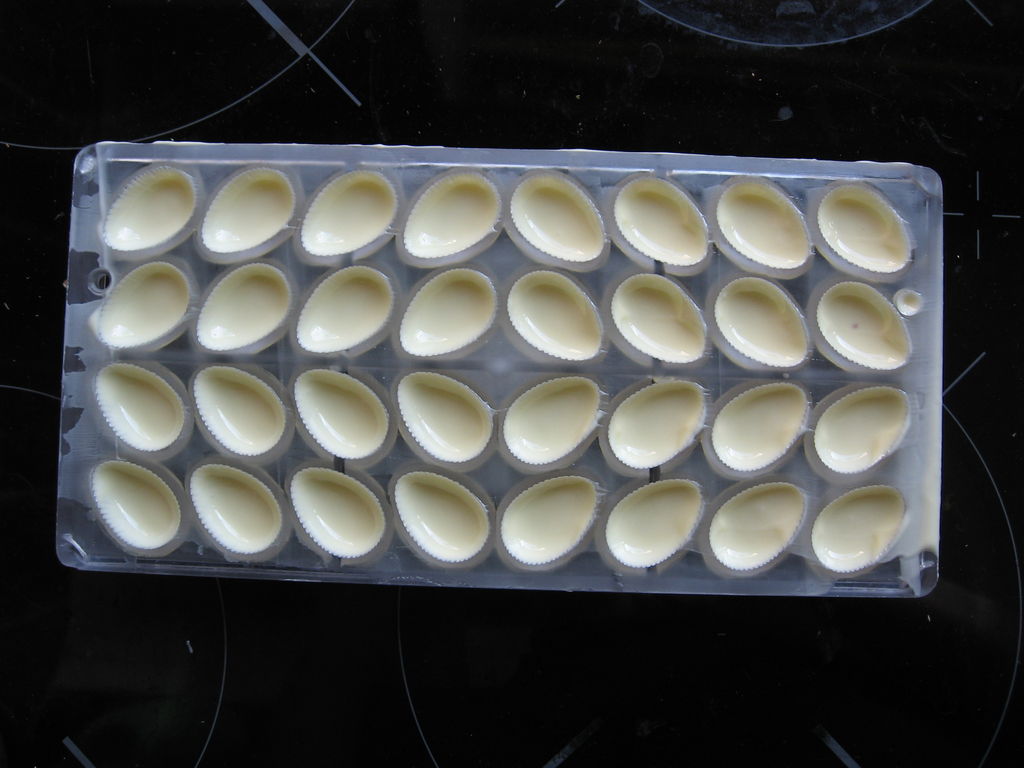
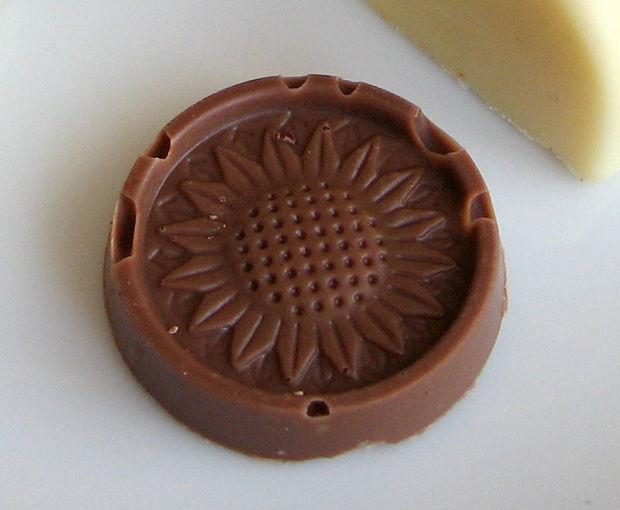
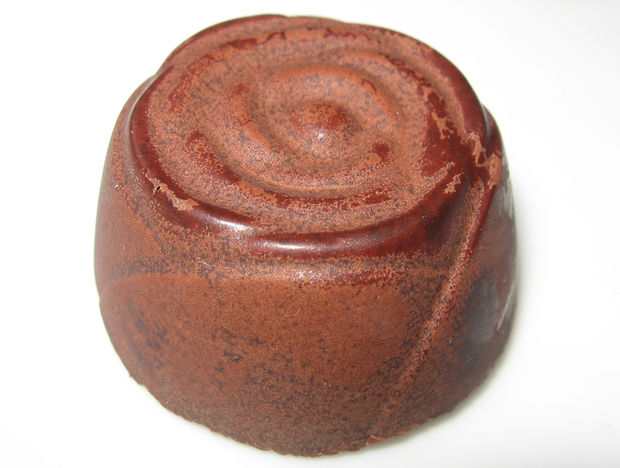





Making ganache To make the filling cook the whip cream. Boiling it ensures that the chocolates can be preserved better. When the whip cream boiles, pour it on an equal ammount of chocolate. The hot whip cream melts the chocolate and you can stir it to an even substance. To give a taste to the filling, you can add a teaspoon of small shavings of the skin of an orange or a lemon. You can also put a spoon of instant coffee in the whipcream to make cappucino filling, or experiment with other tastes! (If you have any nice ideas for the taste, please post them as a comment!) Let the filling cool a while before pouring it in the mold. It is important that the chocolate shell doesn't melt. Put it in the refridgerator again to harden the filling.Tastes Different tastes suit different chocolate. When using lemon I would advise to combine it with white chocolate, while orange is best with dark chocolate. The white filling in the image has a vanilla taste, which suits all kinds of chocolate.
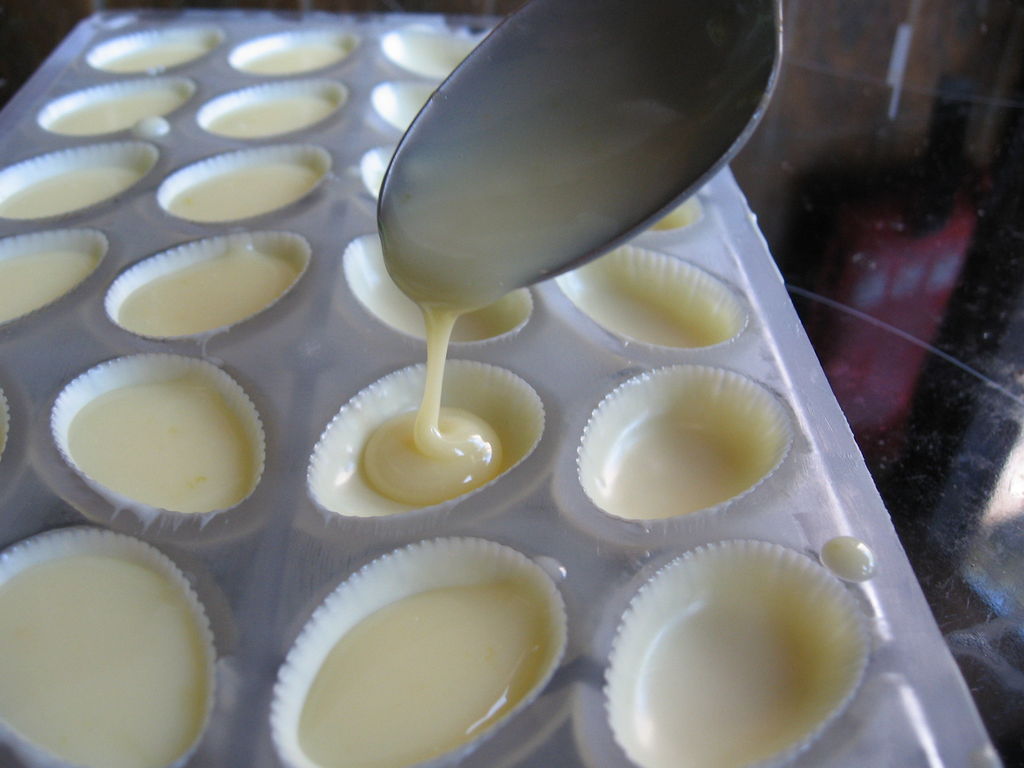
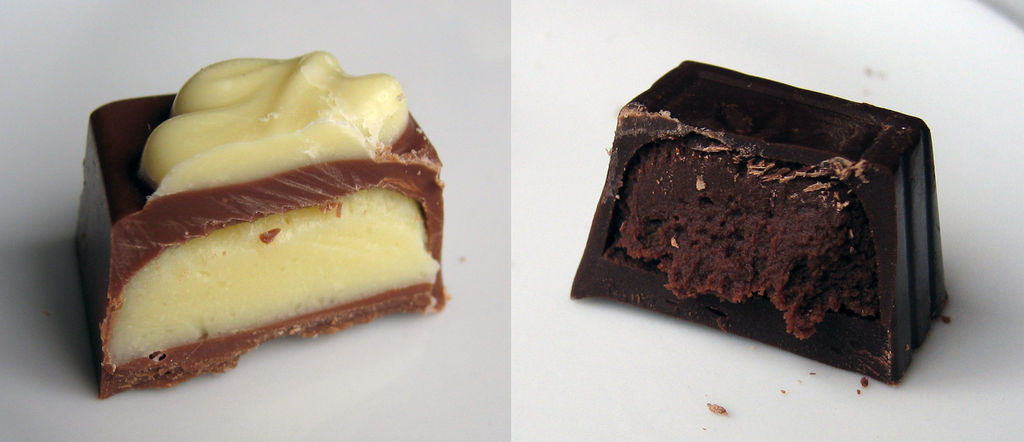


When the filling is hard enough, the bottom of the chocolates can be poured. Just melt a little bit of chocolate. At this stage the temperature is not that critical as earlier. It is even better if it is a bit warmer than 32 degrees, because this will melt the shell a little bit, which lets the bottom stick to the shell. Clean the flat part of the mold with the pallet knife. You will see that the chocolate hardens much faster now, because the mold is still cold. Be careful not to take too much time for the bottom, otherwise you will not have the time to scrape of the excess chocolate before it hardens.
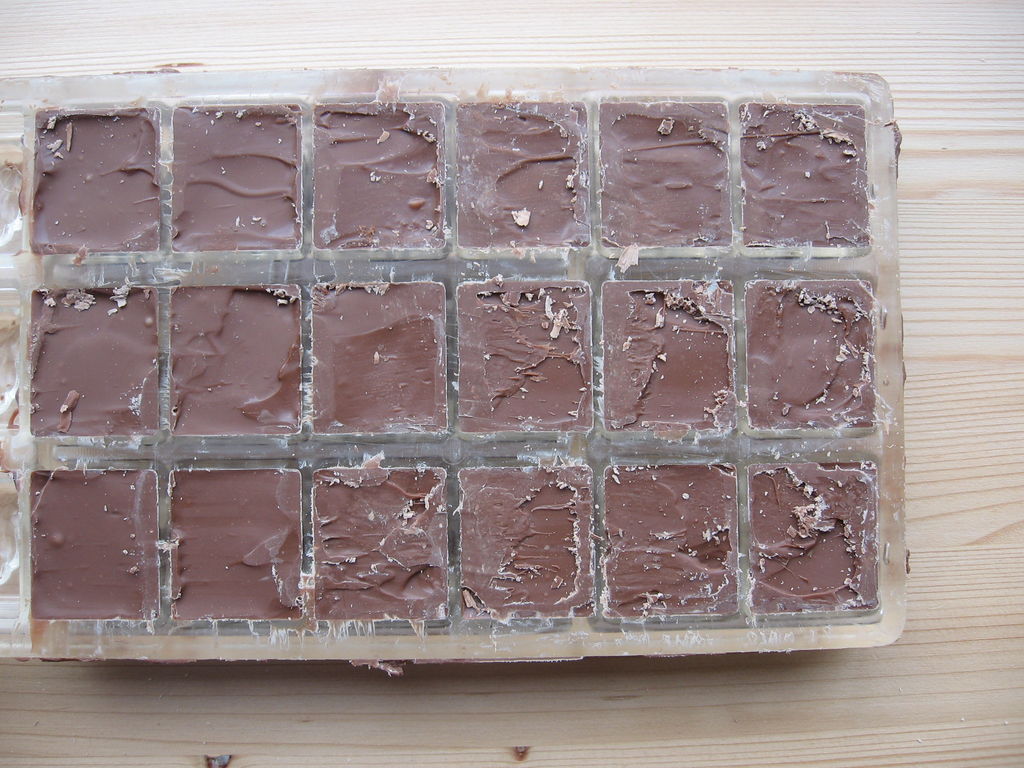
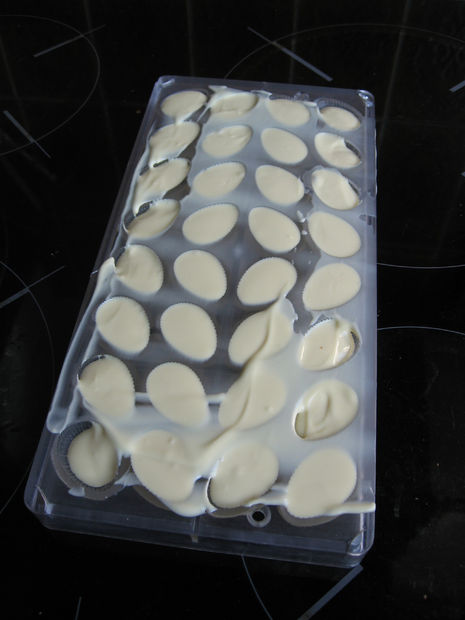


When the bottom part is hardened, you can demold the chocolates. To see if the chocolate has come loose, you can look at the bottom of the mold.On the left a picture of a well loosened chocolate is shown, whilst the chocolate on the right will probably not come out of the mold, because it has not loosened.Many different things can cause the chocolate not to crimp nor become loose:The chocolate has not been tempered well (is molded while it was too warm) The chocolate is of poor quality The chocolate has cooled too fast or too slow The shell is too thinA nice gleam is the best benchmark for your succes. If the process went well, the chocolates should have a nice gleam on them. If this is not the case, they will of course still taste well, but you could improve your technique. Most likely the cooling process went too fast or too slow.Serving the chocolates can be done whenever you want. I like to keep the chocolates in the refrigerator. About ten minutes before serving them I get them out of the fridge so they can warm up a little. The result: beautiful chocolates with a nice crunchy shell and a delicious soft filling.
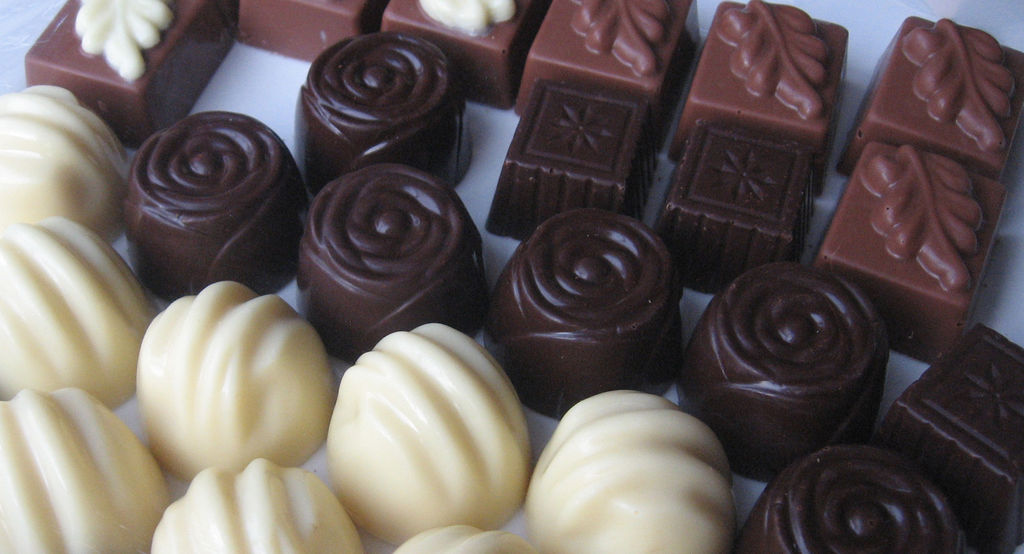
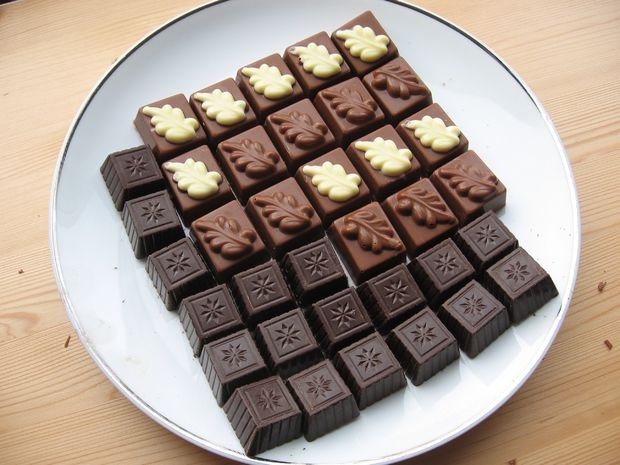
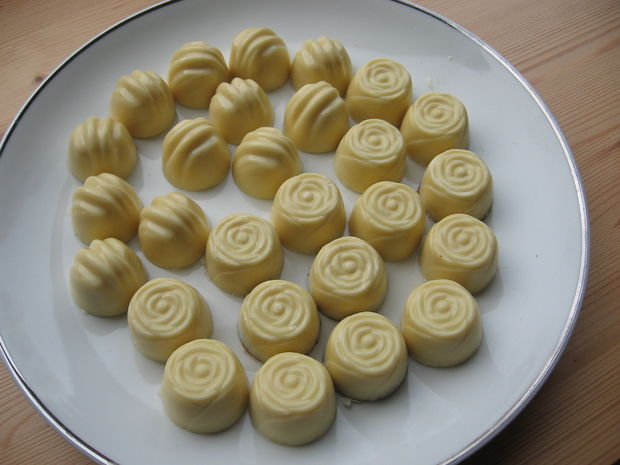
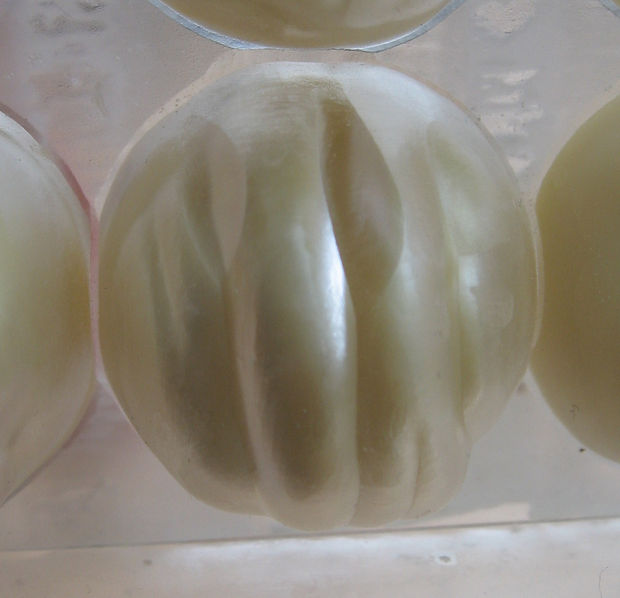
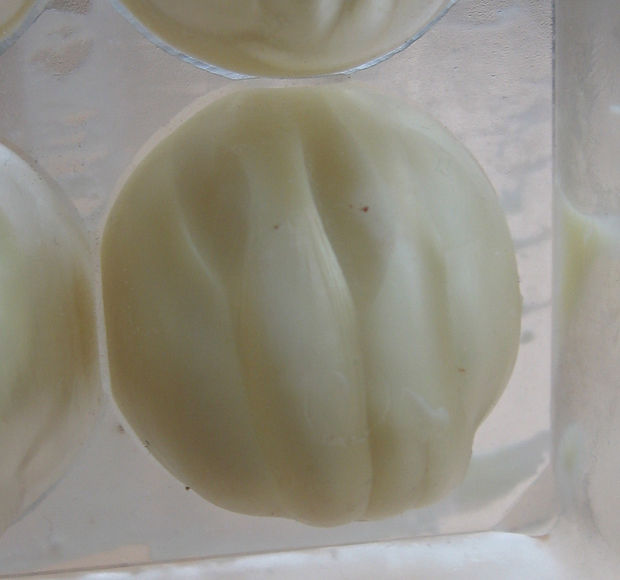





Question & Answer
Question: Choose the best title for the missing blank to correctly complete the recipe.
Materials
Melting the Chocolate
Filling
____________
Choices:
(A) Demolding and Serving
(B) The "power Up" Chocolates
(C) Choosing Chocolate
(D) Irish Coffee Ganache
 (A) Demolding and Serving
(A) Demolding and Serving